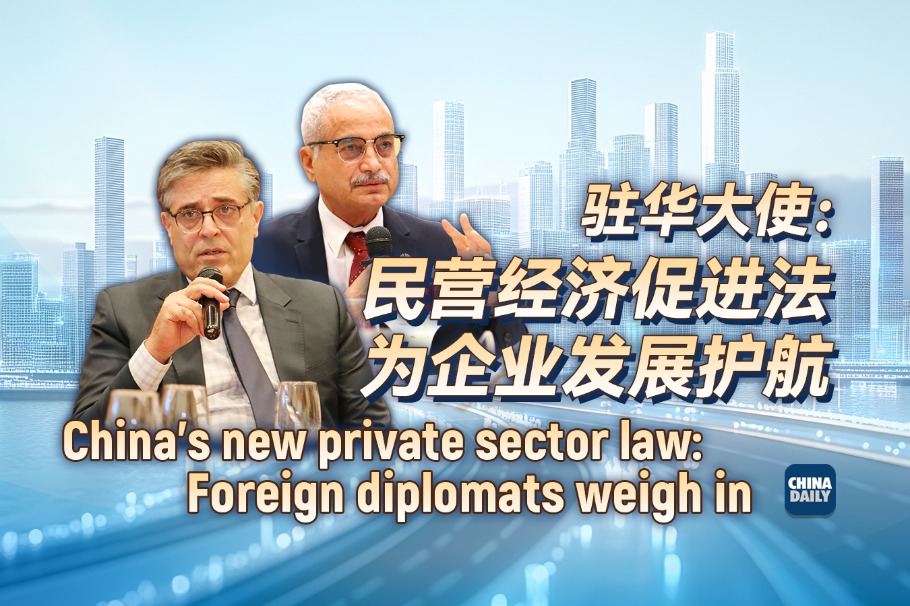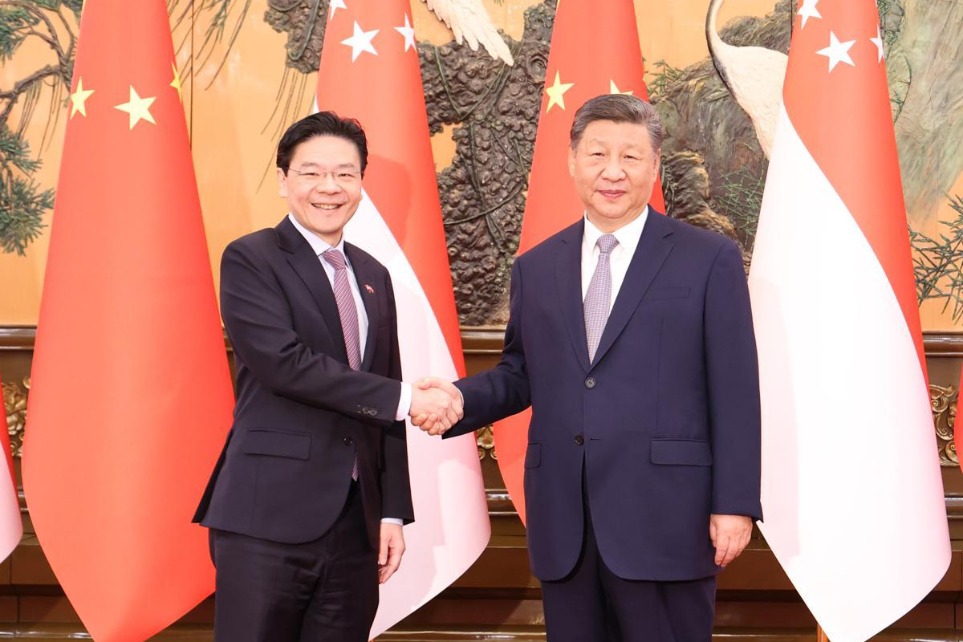Continued evolution of global value chains


Trend of regionalization should be seen as the next stage of globalization rather than its reversal
The Regional Comprehensive Economic Partnership has attracted a lot of attention as it is the first free trade agreement in the Asia-Pacific region in which China, instead of the United States or Japan, has played a leading role.
The official signing of the RCEP sends the important signal that if China, the largest economy in the region, is willing to open its market further and promote trade liberalization, other countries will follow suit and join hands.
It shows that most countries in the Asia-Pacific region desire more free trade despite opposition from the US.
Whether China opens its market to neighboring countries or not matters a great deal, and the timing is right for market integration in the Asia-Pacific region.
The US will have a new administration in two months, and there has been much speculation about whether it will seek to revive the Trans-Pacific Partnership Agreement or not.
But the incoming US administration will first have to focus on domestic issues, such as getting a grip on the public health crisis, addressing the country's economic woes and the acute social crises. Compared with the current US administration, the new administration has indicated it will tilt more toward multilateralism in global economic policies, which is good for global economic growth, although it is also dangerous that the president-elect has called on various occasions for greater cooperation between the US and its allies in the competition with China.
Going forward, the RCEP provides a basic framework for the future China-Japan-Republic of Korea Free Trade Area when the three countries start a new round of negotiations in 2021, during which they will aim for higher standards.
At present, cross-border tariffs represent only a small fraction of the many barriers to economic and trade cooperation, while the majority concern the factor markets and the domestic rules and regulations of various countries. For example, countries such as Japan, Australia, New Zealand are signatories to the Wassenaar Agreement which prohibits and restricts technology exports. In compliance with this agreement, many technologies are prohibited from being exported to China, which bodes ill for the formation of stable Asian value chains.
Therefore, countries in the region should be equal and treated equally if a free trade area is to be formed for common development. China, Japan and the ROK, with common interests in fair competition in the technology market and their respective interests in mind, should strive to reach a common understanding and common rules on the management of multinationals and the principle of fairness in the technology market. Even if the China-Japan-ROK FTA is materialized, it won't generate changes without consensus on these issues. China still can do more and do better in this regard.
From a long-term perspective, the global value chain is undergoing regional structural changes. The Chinese government proposed this year a new dual circulation development paradigm with the domestic cycle as the mainstay, but this definitely does not mean it is closing its doors. Instead, it means the country is opening up at higher levels. To this end, market integration in Asia with the Chinese market at the core is of great importance.
In recent years, it has proved very difficult to push forward the multilateral framework of globalization, such as reform of the World Trade Organization. In contrast, regional economic integration is moving forward at an ever faster pace.
There is no doubt that the previous globalization trend has changed, and the current trend is regionalization. However, that should not be misunderstood as the reversal of globalization but rather a new stage of globalization, since it still lowers the costs of production, consumption and trade.
Regional integration in Europe, North America and Asia is accelerating. In Asia, with China opening up at higher levels, that means the integration of the Asian market with the Chinese market at the center. The Association of Southeast Asian Nations became China's largest trading partner in September this year. The 15 RCEP signatories account for about one-third of the world's population and the global economy. If they continue to deepen economic integration, it will be great news for regional opening-up and promote even greater opening of the Chinese market.
Statistics show that global value chains are increasingly marked by three pillars of regionalization: Asia with the Chinese market at the core, Europe with the German market at the center, and North America with the US market as its cornerstone.
The RCEP may solidify these three pillars. When it was difficult to move from the General Agreement on Tariffs and Trade to the WTO around 1993, regional economic integration happened instead. It was worried back then that the North American Free Trade Area and the European Union would hinder the development of the WTO, but in fact the exact opposite happened, since it was because of the NAFTA and the formation of the EU that countries raced each other to open up to the outside world, which in turn helped bring the WTO to fruition.
Due to hiccups in multilateral globalization, regional integration has thus taken its place in various regions. The signing of agreements, such as the RCEP in particular, might foster competition for regional economic integration, for example, in North America and Europe, and may also bring about an FTA or bilateral investment agreement between China and the EU. In this sense, the RCEP may lead to an opening-up race. In the long run, large-scale regional economic integration such as the one fueled by the RCEP, will facilitate the opening-up of the entire global economy and greater stability in value chains. It is unrealistic in theory and in practice to have only one value chain globally.
The author is unigroup chair professor of finance at PBC School of Finance at Tsinghua University. The author contributed this article to China Watch, a think tank powered by China Daily. The views do not necessarily reflect those of China Daily.































